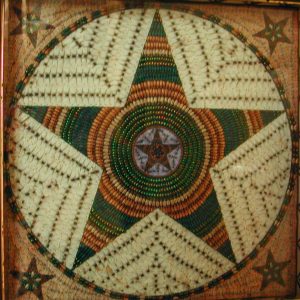
While we are on the subject of art created by non-vertebrates, such as spider webs, let’s take a long look at art literally made from insects and their various body parts.
Yes, right here in Vermont those so inclined can hop on over to Saint Johnsbury and have a peek at the amazing art created by John Hampson. On display at the Fairbanks Museum are geometric mosaic designs made with thousands of actual moths, beetles and butterflies. The insects were meticulously placed on wooden boards and framed, creating an extraordinary, and unusual, to say the least, work of art.
Hampson was born in 1836 in Stockport, Cheshire, England. He arrived in the USA in 1860, married in the 70s, and then moved to Newark, New Jersey. He was fascinated with and passionate about insects. Due to his extraordinary love of all things insect, he spent literally years assembling each one of his nine mosaics. Each artwork contains anywhere from 6,300 to more than 13,500 insects or their parts. Even the frames of the mosaics are composed of shining beetles and colorful flies.
In 1923 the Newark Evening News waxed poetic about Hampson’s art:
“Most of them are the common field flies and moths – the skippers, cabbage flies and other familiar to everyone who has a back yard. It would take perhaps three or four years for Hampson to complete one picture, mounting the insects so that the white, black, red, orange, blue and yellow wings would form pictures of famous American generals in characteristic poses, or intricate designs such as the North Star, completed in 1887, or the Centennial Wheel, finished in 1892, copies from patchwork quilts, which had won prizes at exhibitions. But no scraps of silk or calico can match the deathless coloring contained in the wings of these tiny children of the fields and flowers.”
